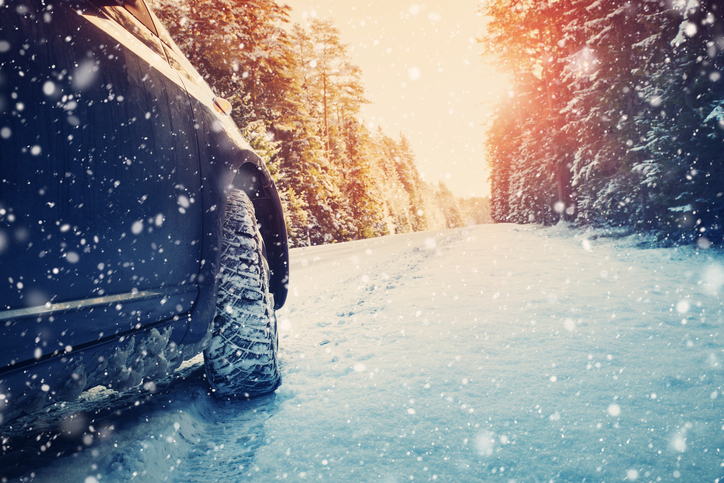How to Prepare for Driving on Snow
Before you bundle up in your warmest winter clothes, take a moment and think about your journey. Is it even necessary? It makes no sense to risk your safety and possible car damage if you don’t have to travel. The safest choice is to stay home.
If you must travel, be sure to pack a few essentials in case you’re out in the elements for an extended amount of time. If you’re stuck in a snow drift or have a stalled engine, a bottle of water and some snacks like granola bars will keep you nourished until assistance arrives. It’s also smart to pack a blanket, gloves and a hat to keep you warm in case you have to walk home. Also make sure that your cell phone is fully charged before you leave your house. There’s no guarantee that you’ll be able to charge it in your car. Finally, whether it is winter, spring, summer or fall, you should always pack an emergency kit with jumper cables, a flash light with extra batteries, and a first aid kit.
Tell someone—a friend, family member, even a neighbor—where you are going, when you intend to get there, and the route you plan to take. If anything happens, someone else will know your plans and can either check on you or share the information with authorities if necessary.
How to Drive on Snow or Ice
If snow is on the road, there are a number of potential hazards you may face. First, the snow may cause you to lose traction, which can result in a car accident. Be sure to accelerate, turn, and brake slowly. If you do lose traction, gently pump the brakes and steer into the direction you want the front of the car to go. For example, if the rear of your car is sliding to the right, steer to the right to straighten out your path. It can get scary, but it’s important to try to remain calm.
Whether you’re driving on snow or ice, be sure there is plenty of braking distance between you and the cars in front of you. Remember, it will take you more room to stop when the roads are slippery, so give yourself enough time to react. If you drive on a patch of ice, do not hit the brakes. Braking will almost certainly set you in a spin. Instead, remove your foot from the accelerator and keep the steering wheel straight if possible.
Rules of Thumb for Driving in Bad Weather
There are two rules of thumb that will help you deal with any type of inclement weather. We’ve already mentioned both of them. The first is obvious: slow down. This is the best way to deal with adverse conditions. Remember that a proper speed isn’t just determined by the speed limit signs, it’s also determined by the road conditions themselves. Assess the conditions, and choose an appropriate speed.
The second rule of thumb for driving in bad weather is to increase your following distance. Give yourself more room than you think you need between you and the car in front of you. Other drivers may brake abruptly or may lose traction themselves. You want to able to safely stop without slamming on your brakes.
Winter can be a challenging time for drivers. To stay safe on the roads—be smart, be cautious, and be a good defensive driver. To learn more defensive driving techniques and save money on your car insurance, take the Drive Safe Online interactive course www.drivesafeonline.org.

Patrick M. is Editorial Director for the always expanding DriveSafe Online library of courses. With over two decades of experience developing award-winning training, he now focuses on innovating online driver safety training. Pulling from his background in journalism, he steers the wheel behind the creation of top-tier content that promotes a better journey—whether on the digital highway of learning or the real roads we travel every day.

